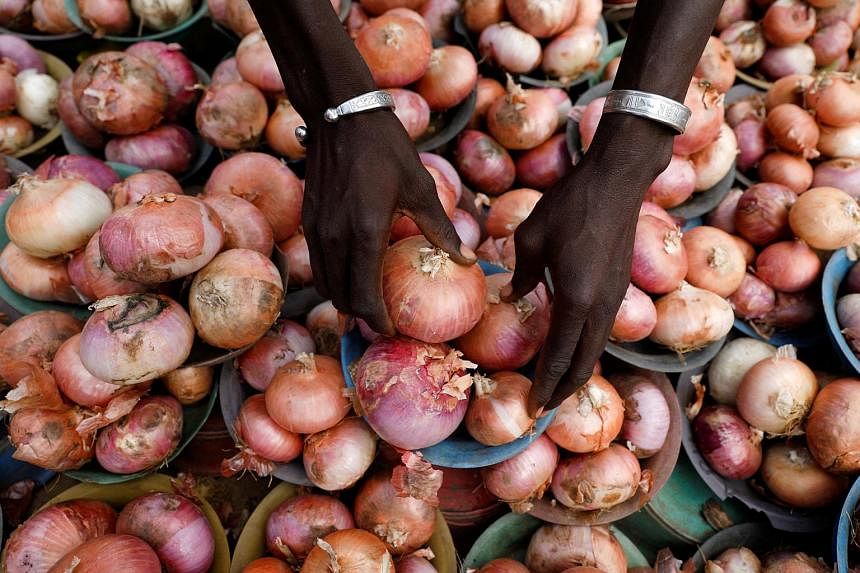NEW DELHI - Onions are political hot potatoes in India. With their limited growing window, this kitchen staple is highly vulnerable to price shocks that prompt public backlash that can change the course of elections.
In 1998, voters, angry about soaring onion prices that were as much as seven times of the previous year's, booted the Bharatiya Janata Party government in Delhi out of power.
Conscious of this persistent problem, the Indian government has announced a "Grand Challenge" to source cost-effective solutions to reduce wastage of onions while in storage.
Students, researchers and start-ups are eligible to participate, among others.
Launched on July 10, the call spans three stages over a year, spanning from ideation to field implementation.
In the first stage, the government has offered financial support of 100,000 rupees (S$1,740) for up to 40 chosen teams.
Ideas have also been solicited to help with processing and value-addition so that excess onions during harvest seasons can be used optimally.
India is the world's second-largest producer of onions with an annual production of around 27 million tonnes in 2020-21. Around 16 million tonnes are consumed domestically each year.
India is also one of the top exporters of onions, and key destinations for its produce include Bangladesh, Nepal, Indonesia and Malaysia.
But a supply crunch in India that leads to export restrictions can hike prices in other countries, such as when the country banned onion exports in 2019 after an extended monsoon delayed harvests.
According to an AFP report, the price of 1kg of onion in Bangladesh had soared from the usual 30 taka (S$0.44) to around 260 taka after India imposed its ban.
A key problem is that nearly 65 per cent of India's annual production comes from the Rabi crop that is harvested during May and April.
With the following harvest due only in October, it is critical to maintain stocks of the Rabi produce till then.
Farmers often pile up their onions several feet high in metal wire enclosures under large tin sheds.
But such conventional open-ventilated storage leads to significant wastage - ranging from 25 per cent to 60 per cent, depending on local weather conditions - that shrivels onion availability later in the year.
Dr Rajiv Baliram Kale, a senior scientist at the government's Directorate of Onion and Garlic Research in Pune, told The Straits Times that it is not possible to control temperature, humidity and aeration in open ventilated storage systems, which exacerbates wastage.
High temperatures in the months of May and June that exceed 40 deg C, for instance, lead to weight loss in onions, while excess humidity causes sprouting as well as rotting.
"Rotting in onions is very contagious," said Ms Kalyani Shinde, founder of Godaam Innovations, which has developed a device that leverages Internet of Things technology to monitor warehouse stores in real time for the gases that rotten onions emit as well as track indoor micro-climatic conditions.
Farmers are alerted via text messages to any rotting detected.
"Detection of wastage is still conventional, with farmers relying on their basic sense of smell," she added.
"Our timely information helps farmers take prompt action to cut further waste."
Besides setting up climate-controlled warehouses, the Nashik-based firm retrofits existing open-ventilated warehouses to improve ventilation and climatic conditions and equips them with its devices.
The company says this can reduce wastage by 20 per cent to 25 per cent.
Dr Kale and his colleagues, along with cold storage and agri-tech firm Kala Biotech, have also developed a climate-controlled storage structure where temperatures are maintained at 25-30 deg C and humidity is restricted to 60-65 per cent.
Aeration is also controlled inside with fans and air coolers.
These structures hold anywhere between 1,000 and 5,000 tonnes of onions.
This system, which was launched commercially in June, has cut wastage to less than 10 per cent.
"Such a system will also help farmers (so they aren't) forced to sell their onions at low prices during the glut season," Dr Kale said.


